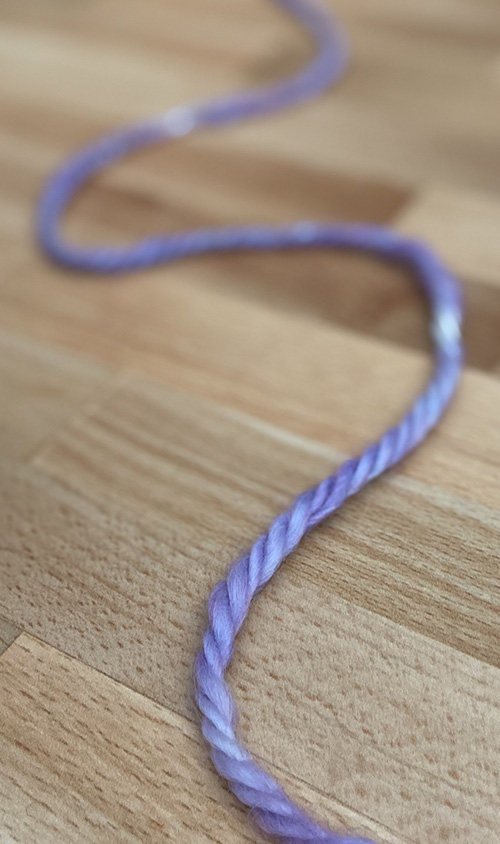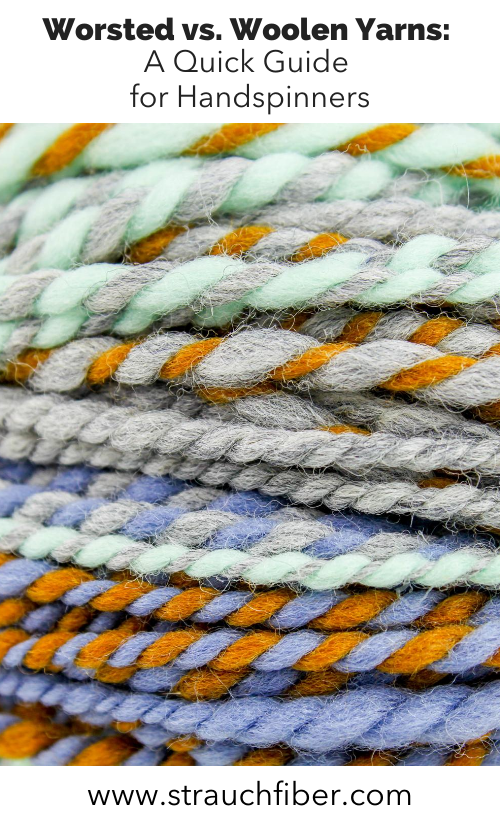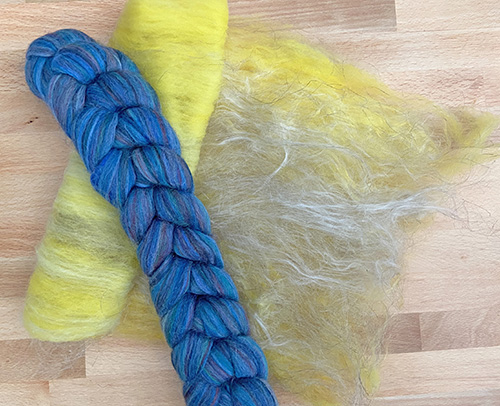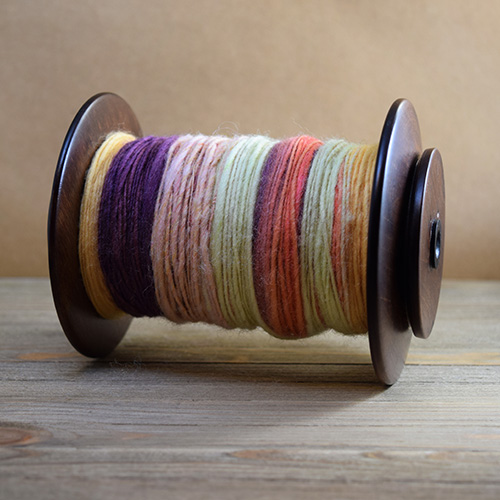Do you know what kind of yarn you’re spinning? Handspun yarns (as well as commercially-spun yarns!) can be classified as worsted or woolen, which refers to the fiber preparation and how they were spun, rather than the yarn weight or fiber content. For technically-minded spinners, making the perfect woolen or worsted yarn can become an obsession, but the truth is that most spinners make hybrid yarns which could best be described as semi-worsted or semi-woolen…and that’s ok!
As long as you are happy with your resulting yarn, there is no need to be overly concerned with whether or not you are using the “right” technique to spin your yarn and how it should be described. However, knowing the difference between these two categories and how they are created can improve your overall results and give you the power to spin the yarn of your dreams!
It All Starts With Prep
The way your fiber was processed and prepared plays a huge role in the kind of yarn you’ll spin with it.
Woolen preparations add lots of air to the fibers, which are arranged in a random fashion (rather than parallel). Any carded fiber is considered a woolen prep: batts, rolags, punis or roving would be in this category.
Worsted preparations involve combing the fibers to ensure that all of the fibers are parallel. Most commercially-produced tops – even if they are described as roving by the seller – are comprised of combed fibers, and therefore worsted.
Of course, just because you are starting with fiber that is prepped for worsted or woolen spinning doesn’t limit you to the type of yarns you can spin!
Drafting Considerations
The “correct” drafting technique for worsted and woolen spinning is up for debate, but typically a long draw method will preserve airiness in woolen-prepared fibers; you can also spin off the fold (or from the fold) if you find that easier. Whatever technique you choose, make sure that twist is entering the fiber before AND after drafting – this is what traps air as you spin the fiber, giving it loft and warmth.
For worsted-prepared fibers, a short forward draft (sometimes called the inchworm method) will give you plenty of control as you spin, resulting in a worsted-spun yarn. When spinning worsted-style, the twist will be entering the fiber AFTER it has been drafted out while it is still under tension, ensuring that the fibers will remain aligned in the final yarn.
But what if you want to spin a light, airy yarn with commercially-prepared fiber? Drafting from a short foward fold when working with prepared top is a great option for adding a bit of loft and airiness to your finished yarn.
As a handspinner, you have the ultimate freedom to choose your drafting technique. Some will be easier and others more dificult, so it’s a good idea to try things out to see which ones work for you! A fabulous resource, The Joy of Handspinning, does a great job of describing these drafting techniques in greater detail here, and includes tutorial videos you can watch!
Woolen, What Is It Good For?
As makers of drum carders, we’re partial to woolen-spun yarns, which are great for making lightweight yet warm sweaters, hats, scarves, mittens and more – plus, they felt beautifully!
These yarns tend to bloom when you wash them and are often quite soft and elastic; however, they do have a tendency to pill. To reduce pilling, try adding more twist to your singles or using multiple plies for the finished yarn. Fibers such as silk, bamboo or nylon can also add strength and reduce pills, although they can’t be eliminated entirely.
For Better or For Worsted
Worsted-spun yarns are known for being more durable than their woolen-spun counterparts. Because there is less air trapped in the spun fibers, the resulting yarn is dense, smooth and resistant to abrasion. As you might have guessed, most worsted-spun yarns are not ideal for felting (fibers which are all perfectly aligned are difficult to felt!). Here, durability is traded for warmth, with the added bonus of excellent stitch definition.

Now that you have a better understanding of worsted and woolen yarns, we hope you will spin with confidence and experiment without fear! Be sure to share your projects with us on Instagram and don’t forget to tag your post with #strauchfiber!
Like this post? Pin it!


